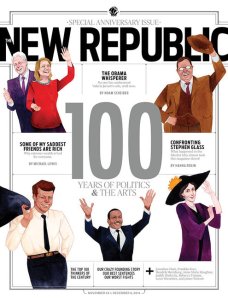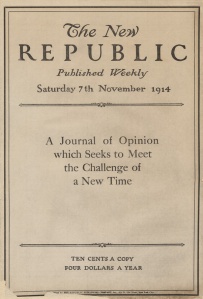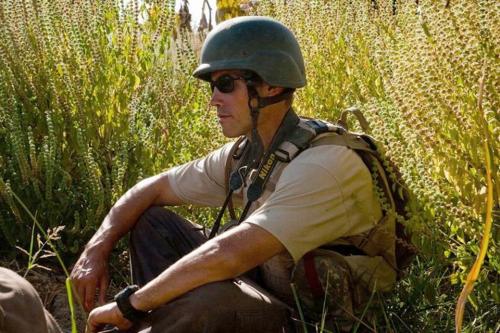August 16th, 2017
By Christopher B. Daly.
Journalists face an unprecedented array of threats: the traditional physical dangers of covering riots and fires; the new online threats posed by trolls; partisan attacks on coverage someone doesn’t like; electronic hacking of our phones, laptops, and other gear.
At Boston University, where I teach journalism, my colleagues and I are trying to develop materials to help our students “Stay Safe” while they are on assignment — reporting, shooting videos, taking photos, recording audio, or whatever. This was prompted by the horrors of the 2013 Boston Marathon bombing (which took place very near our campus) and renewed by the recent denunciations of the news media by President Trump and his supporters.
Below is an attempt to distill best practices from two conferences. If you have experiences or advice to share, please leave a comment.
A JOURNALIST’S GUIDE TO SAFE REPORTING
In rare and unpredictable circumstances, our work as journalists requires us to approach dangerous situations and take calculated risks. Other times, an apparently benign assignment can turn threatening. Wherever your assignment or curiosity takes you, keep these principles in mind:
—DON’T GO ALONE. If you can, go with another journalist. In any case, always make sure someone knows where you are – an editor, a colleague, a friend, a parent. Stay in touch with your “desk.” If there is a calamity, post to Facebook or some other platform, as soon as it is safe, so your friends and family know that you’re OK.
—DON’T MAKE THINGS WORSE. Do not interfere with “first responders” – their work is even more important than yours. Do not take a risk that results in you needing to be rescued.
—DON’T GET IN THE WAY. Take up a position where you can see but where no further danger will come sneaking up from behind. Cover your backside. At a fire, stand upwind, so that the smoke and cinders are not blowing at you. Don’t stand right above a working fire hose; they are under a lot of pressure. At a bombing, remember that bombers often plant a second bomb, timed to go off right around the time you would be arriving.
—DO BE PREPARED. Wear sensible clothes, especially sturdy shoes, even on routine assignments. Pick clothes with lots of pockets. Bring all the gear you depend on, including extra batteries. Wear a press badge on a lanyard, so it’s visible. Carry a pencil or two, just in case your ink runs out or freezes.
—DO MAINTAIN “SITUATIONAL AWARENESS.” Look around and listen to the environment, even while doing an interview or taking a photo. In disasters, things change fast. Be ready to run.
—DO WHAT YOU’RE TOLD. Within reason, obey the lawful safety dictates of firefighters, police officers and other first responders. (This does not mean you have to submit to unconstitutional restrictions, but unless you bring your own army, you may have to fight that one another day.)
—DO TAKE A COURSE IN FIRST AID, from a group like RISC, and consider a course in self-defense.
ESSENTIAL GEAR:
–Press pass, visibly displayed on a lanyard.
–Identification (and, where appropriate, passport).
–Cell phone, with charger and external backup power supply.
–Digital camera, with charger and external backup power.
–Cash and credit card.
–A bandana (which can be used to protect your face from smoke or tear gas).
–A headscarf.
–A bottle of water (and some kind of energy bar).
–Collapsable monopod or hiking staff (or, a flexible mini-tripod).
–Batteries of all kinds.
–Pens, mechanical pencils, etc.
–Flash drive or external hard drive.
–Mini-binoculars (I keep these around for birding, and they can come in handy).
–Comfortable clothes with lots of pockets.
Most of these things should be in your backpack at all times. You never know
Comments Off on Journalists: “Stay Safe” while on assignment
October 30th, 2016
By Christopher B. Daly
Recently, the New York Times observed the 50th anniversary of the founding of the Black Panther Party, which took place in Oakland in October of 1966. In one of those historical twists, it is remarkable to recall that the Panthers built their reputation on their response to police harassment of black motorists. Panther members “patrolled” the streets of Oakland, on the lookout for routine police stops. Before those stops could escalate, the Panthers would roll up and pull out their own weapons (which were then legal to carry in California). With weapons in full view, they would then “observe” the police while they interacted with black citizens.
In its look back at the Panthers, the Times examines its own coverage of the movement and its leaders. It’s a worthy effort, but I believe the Times actually slights one of its own reporters – Earl Caldwell, a pioneer in the movement by African-American reporters and editors to desegregate the newsrooms of mainstream, white-owned newspapers and magazines.
In hopes of giving Caldwell his due, I present the following excerpt from my 2012 book Covering America: A Narrative History of a Nation’s Journalism. In my view, Caldwell did an exemplary job of not only covering the Panthers but also in standing up to the FBI, when the Bureau tried to pressure Caldwell into cooperating. His work is at the heart of the landmark 1972 Supreme Court ruling known as Branzburg, a case that lamentably drew the erroneous conclusion that American journalists have no constitutional right to protect their sources from the government.
Caldwell had grown up in Pennsylvania coal country and made his way into sportswriting, then approached the New York Times.
[From Covering America]
. . . The Times was famous for having plenty of black elevator operators, but when Caldwell started in March 1967, he was just the second black in a newsroom position at the Times (following Tom Johnson).
On his first day, Caldwell wore a Brooks Brothers suit and declared that he wanted to write like Gay Talese. For the first few weeks he did what most newly hired reporters did at the Times: cover New York City. On occasion, he served as something like a foreign correspondent, exploring Harlem for the Times’ white readers and describing the sights, sounds, and folkways of people who lived only a few blocks away. Once a Times editor asked Caldwell for James Baldwin’s telephone number, evidently assuming that all black people knew all other black people.
Soon, though, cities across America began erupting in race riots, and the Timestapped the new guy to help out, often teaming him with Gene Roberts, an experienced white reporter who was the paper’s chief Southern-based civil rights correspondent in the late 1960s.
In the spring of 1968, Caldwell traveled to Memphis to cover the strike being waged by the city’s sanitation workers, supported by the Reverend Martin Luther King Jr. Caldwell was in the Lorraine Motel on April 4 when a loud shot rang out.

New York Times reporter Earl Caldwell (at left) trails Rev. Martin Luther King Jr. up stairs in the courtyard of the Lorraine Motel in Memphis, shortly before King’s assassination on April 4, 1968. Caldwell was the only reporter in a position to provide an eyewitness account. (Photo: Memphis Commercial Appeal.)
The only journalist present at the scene, Caldwell immediately called the Timesnewsroom and began dictating details of the King assassination, which the editors spread across the top of page one. According to Caldwell, King had spent most of the day in his room, then emerged around 6 p.m. onto the balcony, wearing a black suit and a white shirt. Caldwell’s report continued:
Dr. King, an open-faced genial man, leaned over a green iron railing to chat with an associate. . . .
The Rev. Ralph W. Abernathy, perhaps Dr. King’s closest friend, was just about to come out of the motel room when the sudden loud noise burst out.
Dr. King toppled to the concrete second-floor walkway. Blood gushed from the right jaw and neck area. His necktie had been ripped off by the blast.
King’s murder touched off a fresh round of violence in cities across America, and Caldwell returned to the “riot beat” for much of the summer.
That fall, Caldwell went to San Francisco to become a West Coast correspondent for the Times. Through his contacts among the few black reporters in the Bay Area, he gained access to Black Power advocate Eldridge Cleaver, and by the end of 1968, Caldwell was the most knowledgeable reporter in the mainstream press about the emerging Black Panther Party, based across the bay in Oakland. As it turned out, the Panthers were shrewd enough about the media to want coverage in the New York Times, and they gave Caldwell access, as well as what reporters call “color” (atmospheric details), on-the-record interviews, just about anything he might want. His stories established that the Panthers were heavily armed and were talking about violent revolution. Caldwell worried about how Cleaver and the other Panthers would react to his reporting, but he didn’t need to. “The Panthers wanted people to know what they were doing. They wanted me to write in the paper about them having guns.”
His reporting also attracted the attention of the FBI, which was waging a nationwide campaign of surveillance and intimidation against radical groups both black and white. That attention would develop into one of the landmark Supreme Court rulings affecting reporters and their ability to protect confidential sources.
The legal case began when FBI agents paid a visit to Caldwell and told him that they wanted a lot more information about the Panthers. Caldwell told the agents that everything he knew was right there in the newspaper, including the fact that the Panthers were armed and that they were threatening to kill the president.
Even so, the government wanted more from Caldwell. He refused to talk, however, believing that any appearance in secret before a grand jury would make him look like an informant and dry up his sources. The agents were not satisfied, and the Bureau turned up the pressure, warning him that he would be forced to testify in court—a step that would not only destroy his relationship with the Black Panthers but jeopardize his value as a reporter on any other beat as well. Facing a possible court appearance, Caldwell destroyed most of his Panther files, but there was still the matter of his testimony. In February 1970 he was served with a subpoena ordering him to appear before a federal grand jury investigating the Black Panthers. The subpoena did not name the Times, but the newspaper hired a prestigious San Francisco law firm to represent Caldwell. Their advice: cooperate.
Hearing that, Caldwell tapped his network of black journalists, who steered him toward a Stanford law professor, Anthony Amsterdam, a brilliant defense lawyer, who agreed with Caldwell’s decision not to testify and offered to represent him pro bono. After he continued to refuse to testify about his news sources, Caldwell was found in contempt of court and ordered to jail, but he was allowed to remain free while his case went to the Ninth U.S. Circuit Court of Appeals. The higher court sided with Caldwell, but then the federal government appealed that ruling. En route to the U.S. Supreme Court, Caldwell’s case was combined with two others and filed under the heading Branzburg v. Hayes. Paul Branzburg was a reporter for the Louisville Courier-Journal who had been an eyewitness to a drug crime. (Thus he was not, strictly speaking, protecting a confidential source.) Paul Pappas was a television news photographer working for a TV station in New Bedford, Mass., who had gone to nearby Providence to cover the local Black Panthers chapter and spent several hours inside their headquarters. Like Caldwell, Branzburg and Pappas were both journalists who had been ordered to testify before grand juries; like Caldwell, they had refused on professional grounds.
In all three cases, the issue was not a classic instance of protecting the identity of a confidential source. It was more a matter of preserving the journalists’ access to sources, which would be destroyed if the people who were being reported on suspected that the reporters had cooperated with law enforcement. All three cases involved a constitutional claim that the First Amendment includes not only the right to publish (and withhold) information freely but also the right to gather news freely.
Recognizing the stakes, news executives threw their institutional weight behind Caldwell and the other reporters. Supporting briefs were filed by the Washington Post Company, the Chicago Tribune Company, the American Newspaper Publishers Association, the American Society of Newspaper Editors, the American Newspaper Guild, the Radio and Television News Directors Association, the Press Photographers Association, and the ACLU—along with affidavits from such respected journalists as Anthony Lukas, Walter Cronkite, and Marvin Kalb.
In a decision handed down on June 29, 1972, the Supreme Court narrowly ruled against the journalists. Writing for the 5–4 majority, Justice Byron White held that the First Amendment had to be balanced against the Fifth Amendment, which guarantees criminal defendants the right to have their cases presented to a grand jury before indictment. In his opinion White invoked the ancient legal doctrine that “the public . . . has a right to every man’s evidence.” The only exceptions, he said, are those instances in which the states have adopted laws specifically granting certain categories of people a legal privilege against having to testify.
Such a “testimonial privilege” might protect a wife from testifying about her husband, a doctor about a patient, or a priest about a penitent. In such cases, legislatures determined that some other social good was worth the cost of allowing the privileged category of people to avoid the grand jury. But, White said, the Court could not take seriously the idea “that it is better to write about crime than to do something about it.” If reporters know things that prosecutors want to find out, they must tell what they know. Besides, the justice wrote, if the Court created a special privilege for journalists, it would soon have to define who is (and is not) a journalist — a task that raised the specter of government licensing of journalists, which would be far more murky than determining who is a doctor or a priest. “Almost any author may quite accurately assert that he is contributing to the flow of information to the public,” White wrote, warning that just about anybody could claim to be a journalist of one variety or another. Finally, White observed that the U.S. attorney general had written a set of guidelines governing the issuance of subpoenas to reporters, which the high court thought ought to suffice for the bulk of cases. The majority opinion also included an invitation to legislatures to create a “testimonial privilege” for reporters, and many state legislatures went ahead and passed versions of what are known as “shield laws.”
In a brief concurring opinion, Justice Lewis Powell, though voting with the majority, very nearly came down on the other side. He warned prosecutors that “no harassment of newsmen will be tolerated,” and he wrote that if reporters feel they are being abused by overzealous prosecutors seeking the names of confidential sources, then those reporters should go to court and seek a protective order. “The asserted claim to privilege should be judged on its facts by the striking of a proper balance between freedom of the press and the obligation of all citizens to give relevant testimony with respect to criminal conduct,” Powell wrote, saying it is up to the courts to handle such claims on a case-by-case basis. Nevertheless, his joining with the majority had the effect of denying journalists’ claims to a constitutional privilege.
Among the dissenters, Justice William O. Douglas wrote one of the most eloquent statements of press freedom in history. Having staked out a position as a First Amendment fundamentalist, Douglas saw the Caldwell and related cases in clear-cut terms. “My belief is that all of the ‘balancing’ was done by those who wrote the Bill of Rights,” he said, adding that “by casting the First Amendment in absolute terms, they repudiated timid, watered-down, emasculated versions of the First Amendment. . . .” The key to understanding the First Amendment, Douglas argued, is to recognize that it exists for the benefit of the American people as a whole. If the people are to govern themselves, they must have reliable, independent sources of information. “Effective self-government cannot succeed unless the people are immersed in a steady, robust, unimpeded, and uncensored flow of opinion and reporting which are continuously subjected to critique, rebuttal, and re-examination,” he wrote.
In Douglas’s view, the free press cases that come before the Court are not really about the press per se; they are about the rights of the American people, the ultimate sovereigns of our system. The press, which serves as the agent of its audience, is incidental to the greater purpose of self-government. Douglas continued:
The press has a preferred position in our constitutional scheme, not to enable it to make money, not to set newsmen apart as a favored class, but to bring to fulfillment the public’s right to know. . . . There is no higher function performed under our constitutional regime. Its performance means that the press is often engaged in projects that bring anxiety and even fear to the bureaucracies, departments, or officials of government.
He concluded by warning that the Court’s majority opinion would reduce journalists to stenographers, and that without the right to protect confidential sources, “the reporter’s main function in American society will be to pass on to the public the press releases which the various departments of government issue.”
The majority, however, did not see it that way. As a result of the Court’s 5–4 ruling against the journalists, reporters and their sources have operated in legal jeopardy ever since, at least in federal courts. On the state level, the Branzburg ruling had the effect of spurring many legislatures around the country to enact shield laws to protect reporters in state courts, but Congress has steadfastly refused to recognize the same right on the federal level.
Ironically, the Branzburg ruling also had another impact: it dried up what was probably the FBI’s greatest source of information about the Black Panthers—the reporting that anybody could read in the pages of the New York Times. Of course, by the time Caldwell’s case was resolved, the Justice Department had lost much of its interest in the Black Panthers. Most of Caldwell’s contacts were in jail, in exile, or dead.
Comments Off on Covering the Black Panthers: A Turning Point in America
October 3rd, 2016
By Christopher B. Daly.
Today’s front page of the New York Times presents a dramatic example of what drives some people crazy about the news media — hidden bias. Many people expect the Times to exemplify the 20th Century ideal of journalistic “objectivity,” a perhaps naive view that news should consist simply of facts. In this view, readers of such facts should draw their own conclusions, and the newspaper as an institution should restrict its opinions to the editorial page.
People who hold those views will surely be angry with the Times today for its handling of the Trump-birther story.
Here’s a photo of today’s print version of the Times’ page 1:

The lead story –the one judged by Times editors to be the most important of the day — is not a news story at all. It is a “NEWS ANALYSIS” that is marbled with blatant opinion and bias. The author, Michael Barbaro, obviously hates Trump, and his piece drips with contempt.
Yes, the Times applied a few fig leaves: the NEWS ANALYSIS line above the headline and the setting of the type in a “ragged right” format, rather than the “justified” columns that the paper uses for straight news. But a groggy reader at the breakfast table could be forgiven for expecting a news organization to lead with news, rather than opinion.
The Times did in fact carry a straight news story about the same event, but it was buried inside.
In the online version, things were different, but still exasperating for readers who expect unbiased news. Here is the homepage as of this morning:
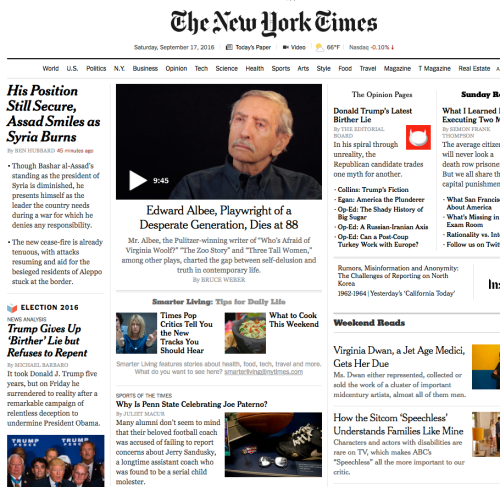
As you can see, the Trump analysis piece is re-contextualized and subordinated to classic Times-only stories: a tribute to a playwright whose work is essentially unendurable and a staff story from a distant hellhole. The Barbaro analysis piece is still there, now positioned in the lefthand column and still given precedence over the related news story. But notice that in the online format, editorials get equal billing with news. What the Times calls “The Opinion Pages” now occupy the upper right quadrant of the homepage — in the spot traditionally reserved in the old print layout for the day’s top news story. So, the reader who scans this page will observe first that the Times hates that liar Trump and second, that the news team follows the same editorial line.
For the record, Times editors insist that they are still following the rules of objective news. They insist that the editorial operation is totally separate from the news operation. They insist that their reporters are factual and fair.
Is it any surprise that some readers disagree?
Alternatively, Times editors might argue that “everybody knows” what Trump said, thanks to faster media. Therefore, the Times should offer readers something of value that they could not find elsewhere. There is some validity to that view, but the Times has not fully embraced that self-conception either.
[In my personal view, the Times faces a crossroads: rein in the opinion, or embrace it. The current approach is awkward at best.]
Comments Off on The NY Times’ bias problem
September 3rd, 2016
By Christopher B. Daly.
Nothing so aptly captures the phenomenon of Donald Trump as the social theory laid out more than a century ago by the German social thinker Max Weber. In Weber’s scheme of understanding power, Trump epitomizes a type known as the “charismatic leader.”
American politicians are sometimes described as charismatic by people who really want to use a word more like “charming.” But leaders like Trump are actually pretty rare in American political history.
Which means, in turn, that Trump is likely to present challenges to the journalists trying to cover him. Most of the national political press corps has never seen the like. On the one hand, Trump is a gift to the news media because he’s exciting; on the other, he does not fit nicely into any conventional category or narrative.
According to Weber, “charismatic authority” is different from traditional or legal sources

of authority. As the great German sociologist argued in “Politics as a Vocation,” the charismatic leader is followed because of his personal qualities. His success depends on “devotion to the exceptional sanctity, heroism, or exemplary character of an individual person, and of the normative patterns or order revealed or ordained by him.” In essence, a charismatic leader is endowed with special qualities because his followers believe he has those qualities. He is powerful because people think he’s powerful.
Trump’s authority is entirely personal. It is not connected to a party or a movement or a set of policies. It is all about him. His subliminal message to the convention and the television audience was: I will make you safe. It’s the rough equivalent of saying “I will walk you to school so no one will scare you.”
As a businessman, he is the “Lord of the Tower.” High inside Trump Tower, he rules over a privately held company. He is not like a CEO of a big publicly traded corporation. The modern corporate executive is a cog in a giant machine – made up of corporate boards, executive committees, finance committees, legal counsel, giant organizational charts, rules, policies, and guidelines. This environment produces CEOS who are risk-averse and who know that their time at the top is limited to about four or five years.

credit: Orlando Sentinel
None of that pertains to Trump. He trusts only those people who work for him in Trump Tower. Any authority they have flows from him directly, in proportion to how close they are to him or how trusted. No one in the Trump camp exercises power independently or by virtue of a place in a bureaucracy. It’s all about personal relationships, as in a royal court or a cult.
♦ ♦ ♦ ♦
While Trump was rising last week, another career in American conservative politics was ending. Roger Ailes, the founding chief of Fox News, was ousted from his powerful position by his only boss, media mogul Rupert Murdoch.
Like Trump, Ailes was a charismatic leader in the Weberian mold. For decades, Ailes ruled Fox News by fear, bullying, helping favorites, and attempting to exercise the droit de seigneur by “flirting” with the many attractive news readers he hired.
Trump and Ailes also shared a masterful instinct for managing the public’s resentment. Even if you never watch Fox News, you have probably heard phrases like these:
- “liberal elites”
- “the War on Christmas”
- “mainstream media”
- “radical Islamic terrorism”
These and similar conservative tropes (or “memes”) are all hobgoblins intended to amplify the fear and loathing felt by some Americans. Such memes reinforce the fear that something is slipping away and reinforce the loathing of those responsible – smart people, immigrants, jihadis, liberals.
Ailes toiled for decades inside the conservative meme factory – generating, refining, and broadcasting the idea that America used to be a great country until _______________________ (fill in the blank: secularism, feminism, political correctness, elites, blacks, gays, immigrants) came along and ruined everything. Like Trump, Ailes practiced a politics of restoration.
♦ ♦ ♦ ♦
Trump had a successful convention in one sense: he managed the almost impossible task of making a modern convention interesting. For decades, the national conventions have been highly scripted, fully produced pageants made for television. No surprises – and no real politics, either. Everything is decided beforehand.
As the Democratic National Convention unfolds in Philadelphia, watch for a dramatic contrast from last week’s show in Cleveland. Hillary Clinton is the opposite of a “chaos candidate” like Trump. He huddles with a small team of political novices and makes decisions at the last minute. In Hillary’s approach to politics, by contrast, professionals are respected, and qualities like steadiness, consistency, and predictably (which Trump disdains) are considered virtues.
She makes plans and sticks to them. She limits access. Everything is vetted. There is a structure with veteran professionals staff all key positions, from speechwriting to finance to policy.
Not so with the charismatic candidate Trump. He harkens back to political insurgents like Huey Long or George Wallace – not (just) in his bigotry but in his personal approach. Trump has no bureaucracy around him. A reporter cannot go seek out Trump’s “foreign policy shop” and get briefings on his approach to the Mideast. First of all, there is no “shop.” Second, even if there were a shop, there is no policy. There will be a policy when Trump makes one up, and it will change when he feels like it. He may meet with Netanyahu, for example, and if they hit it off personally, then Israel is under U.S. protection. If they don’t hit it off, then all bets are off. What are Trump’s budget plans? Who would make up the Cabinet? No one has a clue. Reporters are hard pressed to find reliable sources.
In covering Trump, the media have a further problem: they feel obligated to treat Trump with a straight face. Their professional code prevents them from writing and saying many things that they know to be true.
Moreover, the press gets no down time with Trump. Even when he has retreated to Trump Tower, he could still feel the urge to tweet out some message or insult or provocation at any time, creating a brand-new controversy and “winning” that news cycle.
Trump likes to talk about law and order. But in his style, he is the candidate of chaos. Fasten your seatbelt.
Comments Off on Trump epitomizes the “charismatic leader” where power is personal
August 8th, 2016
By Christopher B. Daly.
“If you would strike at a prince, you must kill him.” –Niccolo Machiavelli
The fall of Roger Ailes is an ephocal event in the history of modern news media. For a man who delivers more than $1 billion in annual profit to his boss and who delivers the top viewer ratings in cable TV news to be fired certainly marks the end of an era.
His departure today was brought about by the charges of sexual harrassment filed in court by Fox News on-air star Gretchen Carlson. (Before there was Megyn Kelly, there was Gretchen.)
Ailes was a king-maker who became a powerful prince himself within the kingdom of American conservatism. By assembling a loyal audience for Fox News, Ailes performed several important services for resurgent conservatism:
–Fox News attacked the rest of the news media
–Fox News provided an outlet for conservatives (including climate deniers, conspiracy theorists, and conservative ideologues who could not get on the air otherwise)
–Fox News hounded the Clintons and Obama while endorsing and defending George W. Bush
–Fox News cultivated and sustained Bill O’Reilly (and stood by him when O’Reilly had his own problems with a sexual harrasment claim).
–Fox News, by selling ads for gold bullion, attorneys for the plaintiff’s bar, and many other products, delivered a consistent profit stream to Murdoch’s News Corp.
The back story is well told in the 2014 biography of Ailes by the journalist Gabriel Sherman. The book is titled “The Loudest Voice in the Room” and subtitled “How the Brilliant, Bombastic Roger Ailes Built Fox News and Divided a Country.” Sherman, a national correspondent for New York Magazine whose recent daily reporting has driven and shaped the coverage of Ailes, lays out the rise of Ailes from the day the young tv producer met Richard Nixon in 1967 and lectured the veteran politician on the power of television.
Ailes went on to work for Nixon, then became an impresario of conservative media. He had a big role in the rise of conservative talk-show champ Rush Limbaugh, then teamed up with conservative media mogul to found Fox News in 1996.
Fox News is the embodiment of Roger Ailes. He is responsible for the shrewd and deeply cynical slogans “Fair and balanced” and “We report/you decide.” Never mind that neither slogan was true. They served the purpose of assembling an audience of American conservatives who consider Fox a national message board.
Ailes harrangued the mainstream media for being liberal, while building the most ideological news operation on the air, all the while denying that he was doing so.
What brought him down was his failure to make an alliance with Murdoch’s sons, who are the future of News Corp. The sons may be less conservative than their father and, as members of a younger generation, they certainly have far less tolerance for the towel-slapping, know-nothing ethos of the Fox News morning show. On that show, whose co-hosts regularly humiliated Gretchen Carlson, who may have more i.q. points than Steve Doocy and Brian Kilmeade combined. They harped regularly on her looks, her wardrobe, and her hotness.
Under Ailes, Fox News had a history of hiring attractive women and placing them in front of the cameras in ways that displayed their physical attributes. Even in an industry like television, which is obsessed with visuals, Fox News stood out for its use of news babes. Turns out, Ailes — who resembles the late Sidney Greenstreet minus the charm — was “flirting” with them and implying that they should put out for him.
In the end, it would appear, the man who ruled by fear was brought down by one brave woman.

Comments Off on Media Earthquake: the end of the Roger Ailes era at Fox News
July 11th, 2016
By Christopher B. Daly

Two important trend lines have recently crossed, probably forever. The number of jobs in the U.S. newspaper sector has now dipped below the number of jobs in the digital media. Newspapers are not dead, but they are no longer the center of gravity for the news business. Thus ends a dominance that began in the 17th century and reached a peak in the 20th century before cratering in the 21st century.
That is one of the major findings in a new study from the U.S. Bureau of Labor Statistics, documenting what many have long noticed: American newspapers are no longer the driving wheel of American journalism. The past belonged to the printing press, but the future belongs to the web.
Here’s the big picture:

Here are some highlights:
–The purple line that starts so far above the others in 1990 represents all employment in the newspaper industry. It’s worth noting that the BLS counts everyone who works at a newspaper, not just the newsroom crew. So, this is just a rough approximation of the employment situation of journalists — reporters, photographers, videographers, podcasters, editors, producers, and others who are directly involved in gathering and disseminating news. That is a much harder number to track.
–Newspaper employment took a hit in the early 1990s, then sort of plateaued, took a steeper hit when the “tech bubble” burst in 2001 (taking with it a lot of full-page ads), and then really dove in the Great Recession of 2008-9. Since then, the downward trend has slowed a bit, but the trend from 2009 to 2016 gives no reason to think that newspapers are coming back.
–The BLS also provides a helpful monthly chart of the data used to draw all those lines. Here are some salient details I found in the data tables.

–Looking deeper into the numbers, it is heartening to see that the overall numbers of jobs in all these industries combined has not dropped very much, having fallen about 3 percent over 26 years. The biggest proportional hit seems to have occurred in “books” — which I take to mean the publishing industry as a whole. While a small number of journalists make a living by writing non-fiction books, it is probably a very small group that depends primarily on their book royalties.
–The big gainer is “Internet publishing and broadcasting.” It’s hard to imagine how 28,800 people made a living putting stuff online in 1990 (which was before the Web became ubiquitous), but there is no mistaking that web-based activities have been on a surge.
–The other big gainer in the last quarter century has been “Motion picture and video production.” It is unclear from the BLS definitions of its categories what fraction of all those folks could be considered journalists. Probably a lot of them work in Hollywood or other venues where they produce content that is fictional or promotional. Still, it is a rough indicator of where the growth is.
One question that these data raise is this: what will journalists of the future need to know and do?
About a decade ago, my colleagues and I began a deep re-think of our curriculum to bring it out of the days of print newspapers, glossy magazines, film-based photography, and broadcast television. We eliminated our separate, medium-based “concentrations” and decided that all our students should be educated as digital journalists. We tore out our darkrooms, converted to all-digital photography, and decided that all our students need to be competent in “visual journalism.” We ramped up our instruction in shooting and editing video. We converted our student radio station to digital and embraced podcasting. We decided that essentially all our coursework should be multimedia. Like other journalism programs in U.S. universities, we found that it was not easy, but it was a matter of survival.
As a specialist in the history of journalism, I spend a lot of time thinking about the centuries when the newspaper ruled the field. The newspaper had a good long run, but it is clearer every year that newspapers not only documented history, they are history.

Comments Off on Journalism jobs: Digital now outnumbers print
March 16th, 2016
By Christopher B. Daly.
In his recent remarks, Republican presidential candidate Donald Trump issued a thinly veiled threat to the news media: if he’s elected, he will (somehow) change the country’s libel laws to make it easier for him and others to sue the news media. It’s an issue with a history that is worth remembering.
Here’s Trump (from CNN):
“One of the things I’m going to do if I win… I’m going to open up our libel laws so when they write purposely negative and horrible and false articles, we can sue them and win lots of money,” Trump said during a rally in Fort Worth, Texas.
“We’re going to open up those libel laws so when The New York Times writes a hit piece, which is a total disgrace, or when the Washington Post, which is there for other reasons, writes a hit piece, we can sue them and win money instead of having no chance of winning because they’re totally protected,” he said. “We’re going to open up libel laws and we’re going to have people sue you like you’ve never got sued before.”

Trump, who has lost a libel suit in the past, took his usual menacing tone and framed the issue as a conflict between himself and the media. The party that is missing from that formulation is the American people, who are the real clients of the First Amendment. That is the amendment that says, in part: “Congress shall make no law abridging the freedom of the press.”
And that press freedom extends into the realm of libel, as I explained in my history of

this country’s journalism, Covering America. Trump is not the first public figure to try to use the libel laws as a backdoor way to achieve the ultimate goal of intimidating and controlling the news media. Here’s an excerpt from Covering America:
One of the greatest potential threats to the national coverage of the South arose in 1960 in Montgomery, Alabama. The means of intimidation was not the usual one—violence or the threat of it—but the legal system itself. At risk was the ability of the news media even to cover the movement in an honest, independent way.
The threat first arose in April 1960 as an unintended consequence of a decision by a group of civil rights activists to place a full-page advertisement in the New York Times decrying the “unprecedented wave of terror” being imposed on the Reverend Dr. Martin Luther King Jr. and student activists. The ad stated: “Again and again, the Southern violators have answered Dr. King’s peaceful protests with intimidation and violence. . . . They have bombed his home almost killing his wife and child. They have assaulted his person.” For good measure, the ad charged “grave misconduct” on the part of Montgomery officials as a group.
The city’s police commissioner, L. B. Sullivan, was incensed and decided to sue the Times for libel. (It didn’t matter that the offending passages were in the form of an advertisement and not a news story produced by a Times journalist; under U.S. law, a publisher is equally responsible for all content. It also didn’t matter that Sullivan was not singled out by name in the ad; under U.S. law, if an individual can reasonably be identified, that is enough.) Sullivan sued for $500,000 in an Alabama state court, charging the Times with publishing damaging falsehoods about him. The threat was clear: if Sullivan won, no paper could afford to cover the civil rights movement. “Silence, not money, was the goal,” as one recent history puts it.
For the Times’ Southern correspondent, Claude Sitton, the suit meant that he had better hightail it out of Alabama to avoid being subpoenaed, so he headed straight for the Georgia line, leaving Alabama essentially uncovered for the next two and a half years. For the paper’s lawyers, however, fleeing to another state was not an option, though they tried. It was difficult even to find a lawyer in Alabama who would agree to represent the Times. When one was finally found, the lawyers decided that their only recourse was to argue that the suit did not belong in an Alabama court, since the paper did hardly any business in the state. The jurisdictional argument didn’t work. The paper lost in the circuit court in Montgomery (where the judge criticized “racial agitators” and praised “white man’s justice”), and Sullivan was awarded the full $500,000—the largest libel judgment in that state’s history. The Times appealed, only to lose again. Further appeals did not look promising, since the U.S. Supreme Court had held that journalists had no constitutional protections against libel claims. So far, the use of the courts to silence the press was working.
The passage through all those courts took years, but the Times did not give up. Whatever the publisher and editors thought about civil rights, they were professionally committed to upholding ournalistic principles and prerogatives. The final appeal was argued before the U.S. Supreme Court on January 6, 1964. The stakes were high. “The court would decide nothing less than how free the press really could be,” one observer has noted. “If the decision went against the Times,would reporters be vulnerable to every libel claim filed by a ticked-off sheriff?”
And it wasn’t just the Times that was at risk. All told, Southern officials had filed some seventeen libel suits against various news media, seeking damages that could total more than $288 million. If they succeeded, the cost of covering race in the South would be so prohibitive that even the wealthiest national news media would have to pack up and go home.
On March 9, 1964, the Court issued its unanimous ruling in the Sullivan case—in favor of the Times. The ruling, a milestone in expanding press freedom, rewrote many of the rules under which journalism has been practiced ever since. The key finding was that the law of libel had to yield to the First Amendment. The Court held that if the award to Sullivan were allowed to stand, the result would amount to a form of government censorship of the press, tantamount to a de facto Sedition Act, forcing every journalist to prove the truth of every statement, which would in turn lead to self-censorship. Instead, the high court said that “debate on public issues should be uninhibited, robust, and wide-open, and that it may well include vehement, caustic, and sometimes unpleasantly sharp attacks on government and public officials.”
To make sure that journalists had the breathing room they need to report on and editorialize about the performance of public officials, the Court determined that libel should not be used to trump press freedom. Public figures like Sullivan, who voluntarily enter the public arena by seeking office, must expect to take some criticism. Henceforth it would not be enough for a public official who wanted to win a libel suit just to prove that the published material was false and defamatory. Plaintiffs would have to meet a higher burden of proof, which the Court defined as “actual malice,” a legal term meaning that the material in dispute was published with the knowledge that it was false or with “reckless disregard” for the truth.
Either way, public figures would have a much harder time winning such suits. The Times—and the rest of the media—were free to go back to Alabama and wherever else the civil rights story took them. . .
Comments Off on Trump is dangerously wrong on libel: Why journalists need Constitutional protections
October 29th, 2015
By Christopher B. Daly.

After a summertime hiatus, I want to revive my thoughts. As ever, there is much to say about journalism, history, and the assorted other topics that show up here from time to time (NCAA, fossil fuels, etc.)
Today, I want to praise the NYTimes business columnist Eduardo Porter for his smart and effective use of history to inform what was essentially a political column about Donald Trump.
Porter begins with the premise that we all have our own histories and that our individual histories are entwined with the broader histories of our times. In Trump’s case, that personal history involved a coming of age at a very unusual period in American history — when the fraction of the foreign-born population was at an all-time low.
When Donald Trump was reaching adulthood in the mid-1960s, the United States was a less diverse place. By 1970, the share of the population born overseas had shrunk to 4.7 percent, the slimmest on record. Only about 0.4 percent of the population had been born in Mexico.
For a person of Trump’s time, that experience helps define a norm, against which all change is experienced as a deviation. Thus, for Trump and the slice of the population that is about his age (69, about the oldest possible slice of the baby boom), the last few decades represent a disorienting change in the composition of American society.
Incidentally, there is nothing inevitable about his perception that such change represents a decline. He might see it as a plus. The fact that he interprets the change as a harm tells us a lot about Donald Trump as an individual. The times in which we live do not dictate everything about us; they just give us material to work with.
My only gripe with Porter’s column has to do with an issue that pervades the Times. Why won’t the paper include more links to source material? Most of the links in the online version link to other Times stories or to backgrounders prepared by the Times.
In the Porter piece, it would make sense to link to the works of some of the experts he cites or to link to the Pew study he relies on. I suppose the paper is worried that readers will depart from the Times‘ site via links and never return. But I think that’s wrong. I think more readers would value the Times more if it included external links.
Besides, if the Times is going to write using a historical perspective more often, the writers will have to meet the standards that historians have for evidence. Footnotes anyone?
Comments Off on Journalism informed by history
September 16th, 2015
By Christopher B. Daly.

After a summertime hiatus, I want to revive this site. As ever, there is much to say about journalism, history, and the assorted other topics that show up here from time to time (NCAA, fossil fuels, etc.)
Today, I want to praise the NYTimes business columnist Eduardo Porter for his smart and effective use of history to inform what was essentially a political column about Donald Trump.
Porter begins with the premise that we all have our own histories and that our individual histories are entwined with the broader histories of our times. In Trump’s case, that personal history involved a coming of age at a very unusual period in American history — when the fraction of the foreign-born population was at an all-time low.
When Donald Trump was reaching adulthood in the mid-1960s, the United States was a less diverse place. By 1970, the share of the population born overseas had shrunk to 4.7 percent, the slimmest on record. Only about 0.4 percent of the population had been born in Mexico.
For a person of Trump’s time, that experience helps define a norm, against which all change is experienced as a deviation. Thus, for Trump and the slice of the population that is about his age (69, about the oldest possible slice of the baby boom), the last few decades represent a disorienting change in the composition of American society. Incidentally, there is nothing inevitable about his perception that such change represents a decline. He might see it as a plus. The fact that he interprets the change as a harm tells us a lot about Donald Trump as an individual. The times in which we live do not dictate everything about us; they just give us material to work with.
My only gripe with Porter’s column has to do with an issue that pervades the Times. Why won’t the paper include more links to source material? Most of the links in the online version link to other Times stories or to backgrounders prepared by the Times. In the Porter piece, it would make sense to link to the works of some of the experts he cites or to link to the Pew study he relies on. I suppose the paper is worried that readers will depart from the Times‘ site via links and never return. But I think that’s wrong. I think more readers would value the Times more if it included external links.
Besides, if the Times is going to write using a historical perspective more often, the writers will have to meet the standards that historians have for evidence. Footnotes anyone?
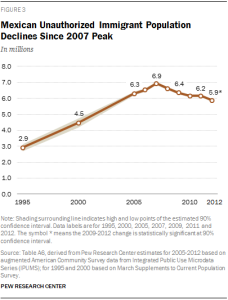
Comments Off on Journalism informed by history
June 17th, 2015
By Christopher B. Daly.
What has become of the New York Times‘ media beat? A year ago, the Times had a strong claim to be the single most important source of original reporting about journalism and other media issues. Today, in the Monday Business section of the print edition, not a single story. The obvious reason is the death six months ago of David Carr, the paper’s pre-eminent media reporter/columnist. But that was a long ago in media terms, and the paper shows no sign of recovering its mojo. I have heard that there is a search underway with a small number of finalists. There has been some speculation in other venues, but little indication from the Timesthat the paper has a commitment to regaining the leadership in covering its own industry. It will take more than a single high-profile hire, too. To make it work, the paper needs a full-fledged “desk” with an editor, a team of reporters (to compensate for the loss of Brian Stelter in late 2013), and a high-impact columnist.
–One thing you never want to hear on the other end of your telephone line: “Hi, this is Mark Fainaru-Wada, and I have a couple of questions for you . . .” Here is his investigation into Hope Solo, the 33-year-old goalkeeper of the U.S. women’s World Cup soccer team. It sounds like she was one hot mess that night. (Among other things, ESPN‘s Fainaru-Wada was one of the reporters at the SF Chronicle who broke the BALCO steroids scandal.)
–Speaking of ESPN, does anyone doubt that there’s more to come on the Friday afternoonsacking of Jason Whitlock as founding editor of The Undefeated? I’d like to hear it straight from Whitlock himself. Hmmm. . .
—Gawker, a pioneer in digital journalism, is making news itself. First, there was the startling vote by the hamsters who churn out all that clickbait to form a labor union. As a former union member (The Wire Service Guild) and a sometime labor historian (Like A Family) myself, I say welcome to the movement that brought us all the weekend.
Then, the Times weighed in last Friday (in a pieceunder the standing head MEDIA) about Gawker founder and editor in chief Nick Denton. After a fairly labored lead about Denton smoking a joint on a fire escape with his husband, the Timespiece (by Jonathan Mahler — a possible candidate for for taking over the Media Equation column?) observes the phenomenal growth of Gawker:
Mr. Denton started Gawker Media 12 years ago in his living room. It was initially just two blogs, the snarky — though the term was not yet in popular usage — media gossip site Gawker, and a technology blog,Gizmodo. The company had two freelance bloggers who were paid $12 per post.
Today, Gawker Media encompasses seven sites with 260 full-time employees. There’s the sports blog Deadspin — noteworthy journalistic coups include an investigative article revealing that the football star Manti Te’o had an imaginary girlfriend and the publication of photos said to show Brett Favre’s penis — and the feminist siteJezebel. For technology, there’s Gizmodo. For video gamers, there’s Kotaku. Mr. Denton’s personal favorite is Lifehacker, Gawker’s take on self-help.
By most measures, the company is doing fine. Gawker Media says it generated about $45 million in advertising revenue last year, and was profitable, earning about $7 million.
What could go wrong? Well, for one thing: a $100 million invasion-of-privacy lawsuit pending against Gawker by former wrestler Hulk Hogan. No surprise: Hogan was not happy whenGawker posted a sex tape of Hogan.
The whole piece is worth reading, for its exploration of whether Gawker is capable of maturing as a news source and how it plans to relate to social media.
–A hat tip to the Times‘ public editor, Margaret Sullivan for calling bullshit on the paper over its recent mania over a silly book by Wednesday Martin about the folkways of the wealthy residents of the UES.
It all began, reasonably enough, with a Sunday Review cover story last month by Ms. Martin, in which she told of her experience moving to Manhattan’s Upper East Side and the strange beings she found there — women who were (gasp) blonde, wealthy and fit.
But then, The Times’s overkill machine geared up and began to churn out one article after another: a review of the book, another review of the book, a column about the book, and an inside look at the column about the book, a blog post about the book, and a review of a similar television series with a prominent mention of the book. Then, to finish up (well, one can always hope), there was anews article about the book’s departures from reality and its publisher’s plans to add a disclaimer for future editions.
‘Nuf said.
–The ever-helpful “On the Media” NPR program has a really helpful guide to filming the police in public places. Don’t miss: the ACLU app that makes sure your video of the cops survives even if they confiscate your phone.
–This just in: from today’s Washington Post, hereis media reporter Paul Farhi’s latest offering — atour d’horizon of the digital journalism world. Not a very pretty picture.
Comments Off on Media round-up
May 5th, 2015
By Christopher B. Daly.
As a service to my readers, I am posting this brief life of Tony Lukas, author of “Common Ground” and many other fine works of narrative non-fiction. I wrote this for American National Biography Online, a marvelous authoritative resource for information about prominent Americans.























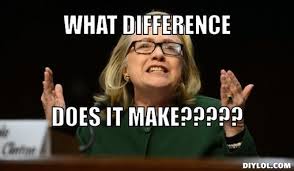

 I agree with Bruni that the political press corps would do us all a favor if they would just stop covering Iowa and New Hampshire. That alone would elevate our national political life.
I agree with Bruni that the political press corps would do us all a favor if they would just stop covering Iowa and New Hampshire. That alone would elevate our national political life.

